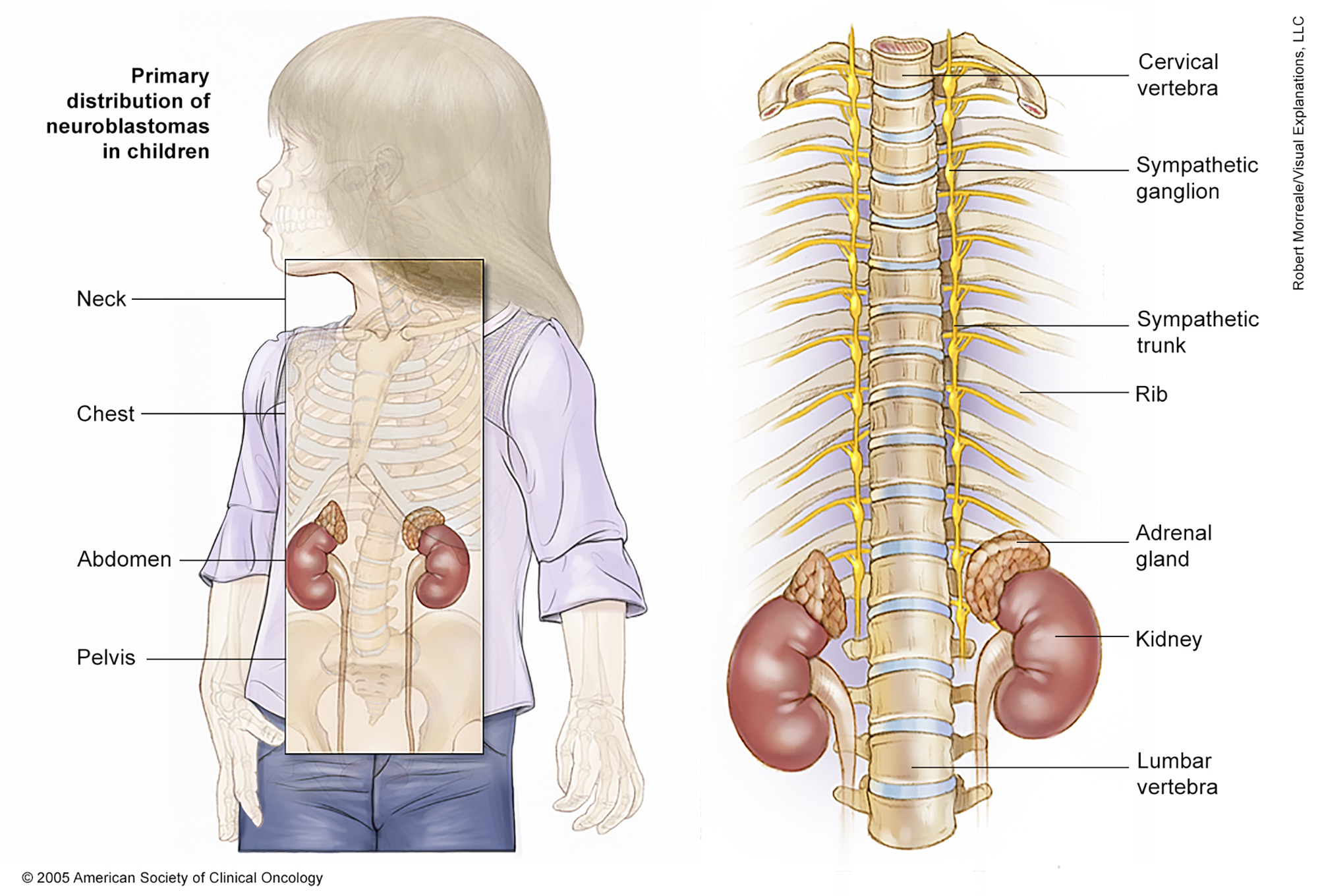ON THIS PAGE: You will find some basic information about this disease and the parts of the body it may affect. This is the first page of Cancer.Net’s Guide to Childhood Neuroblastoma. Use the menu to see other pages. Think of that menu as a roadmap for this entire guide.
Cancer begins when healthy cells change and grow out of control, forming a mass called a tumor. A tumor can be cancerous or benign. A cancerous tumor is malignant, meaning it can grow and spread to other parts of the body. A benign tumor means the tumor can grow but will not spread.
About neuroblastoma
Neuroblastoma is a solid cancerous tumor that begins most often in the nerve cells outside the brain of infants and children younger than 5. It can form in a baby before birth and can sometimes be found during a prenatal (before birth) ultrasound. More rarely, neuroblastoma can also develop in older children, adolescents, and young adults.
The most common place for neuroblastoma to begin is the adrenal glands, which are located on top of both kidneys. These glands make hormones that help control body functions, such as heart rate and blood pressure. Neuroblastoma can also start in the nerve tissue near the spine in the neck, chest, abdomen, or pelvis.
Neuroblasts are immature nerve cells found in an embryo, also called a fetus or unborn baby. Normally, neuroblasts mature into nerve cells or adrenal medulla cells, which are cells found in the center of the adrenal gland. Neuroblastoma forms when neuroblasts don’t mature properly.
Sometimes, babies are born with small clusters of neuroblasts that eventually mature into nerve cells and do not become cancer. But a neuroblast that does not mature normally can continue to grow, forming a tumor.
Neuroblastoma is usually found after the cancer has spread to other parts of the body, such as the lymph nodes (small, bean-shaped organs that help fight infection), liver, lungs, bones, and bone marrow (spongy, red tissue in the inner part of large bones).

Looking for More of an Introduction?
If you would like more of an introduction, explore these related items. Please note that these links will take you to another section on Cancer.Net:
-
Find a Cancer Doctor. Search for a cancer specialist in your local area using this free database of doctors from the American Society of Clinical Oncology (ASCO).
-
Cancer Terms. Learn what medical phrases and terms used in cancer care and treatment mean.
The next section in this guide is Statistics. It helps explain the number of people who are diagnosed with neuroblastoma and general survival rates. Use the menu to choose a different section to read in this guide.
